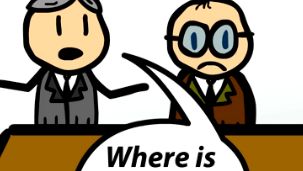Motivation Theory: Needs-Based & Behavior-Based
After you watch the video and know the material, click HERE for the quiz.
There are two schools of thought used to explain employee motivation in the workplace. Needs-based theory states that employees have certain needs that must be met in order to be motivated to perform. Behavior-based theory believes motivating factors influence behavior towards work.
What Is Motivation?
Have you ever worked at a job that was just so demotivating? I bet you called in sick a lot! Maybe you took more than your share of breaks. It could be that your manager didn't understand how motivation to work connects with employee need satisfaction and behavior toward work.
 |
Motivation is our drive or willingness to do something. In the workplace, things like achievement, power, social status, growth and even fear motivate employees to perform.
Harpo worked as a stable hand at Happy Corral Horse Farm. There wasn't much about his work that would motivate most people to wake up in the morning. Harpo was responsible for shoveling the stalls, brushing the horses and walking them to their trough several times a day. There was not much growth at Happy Corral either.
 |
Harpo wanted to ride the winning horse past the finish line, but his job didn't motivate him to reach his goal. Harpo began calling in sick as often as a few times a week. This didn't sit well with the boss, Jack 'Horseneck' McCoy. Horseneck threatened Harpo with termination all the time.
Needs-Based Theory of Motivation
What Horseneck didn't know was that employees are highly productive when their needs are being met or when they are treated with respect and given opportunities to achieve goals.
Needs-based theory of motivation contends that employees have needs and will perform when their primary and secondary needs are met. In the absence of need satisfaction, satisfaction with work will decline and they will no longer be motivated to work.
 |
Harpo had some primary needs met. The stables were clean and safe. But his wages were low, and he had no health insurance. The threats of termination didn't make him feel safe either.
Worse yet, none of his secondary needs were being met.
Secondary needs are internal states, like desire for power, achievement and belongingness. In the workplace, this means authority over one's work, participation in decision-making, opportunities for advancement and good relations with management and co-workers.
Harpo left one day and never returned. Horseneck was left to clean up after the horses when, like a kick to the forehead, it occurred to him - Harpo left because he was unhappy with the work environment, not the job itself.
 |
- Provide a safe working environment and good working conditions
- Offer a fair wage and benefits
- Make employees feel secure in their jobs
- Give employees opportunity for advancement
- Empower employees to set their own goals
- Create professional development programs
When an employee feels his needs are being met, motivation to perform is high.
Behavior-Based Theory of Motivation
Harpo eventually found another job at Trailblazers Stables just up the dirt road from Happy Corral. His new boss, Bart 'Sidesaddle' Bigelow, understands behavior. After all, prior to opening Trailblazers, he too was a humble stable hand. What he learned from his experience was that relationship-building is important.
Sidesaddle spent plenty of time teaching Harpo the ropes. Harpo still had his stable duties to perform, but when he was finished with his tasks, Sidesaddle let Harpo ride the horses around the track.
Harpo rarely took a moment of time off and his dedication was rewarded. There was talk about sending Harpo to jockey school. This made Harpo very happy.
 |
Behavior-based theory of motivation contends that by manipulating certain behaviors in employees, they are more or less likely to perform. In other words, there are things a manager can do to either motivate an employee to perform - or do just the opposite.
Behavior-based theory states that employees are motivated when:
- Tasks are clearly defined
- Expectations are communicated
- Proper tools are provided to get the job done
- Goals are set by employee and management
- They have an opportunity to do meaningful work
- They receive recognition and reward for performance
Sidesaddle provided Harpo with many of the motivators and this increased Harpo's performance significantly. Because Harpo received reward and recognition for his performance, he strived to do better every day.
Lesson Summary
In a nutshell, motivation is our drive or willingness to do something. When employees are motivated, they tend to perform at higher levels. Motivation can stem from need satisfaction or behavioral forces.
Needs-based theory of motivation involves employees' need for things like job security, safe working conditions, room for advancement and good relationships with management and co-workers.
There are two basic types of needs: primary needs and secondary needs. Primary needs in the workplace are job security, a fair wage and benefits and safe working conditions. Secondary needs are higher and include desire for power, achievement and belongingness. When needs are satisfied, employees feel motivated to perform.
Behavior-based theory of motivation influences motivation when tasks are clearly defined, expectations are communicated, tools are available to get the job done, opportunities for meaningful work are available and there is reward and recognition for performance.